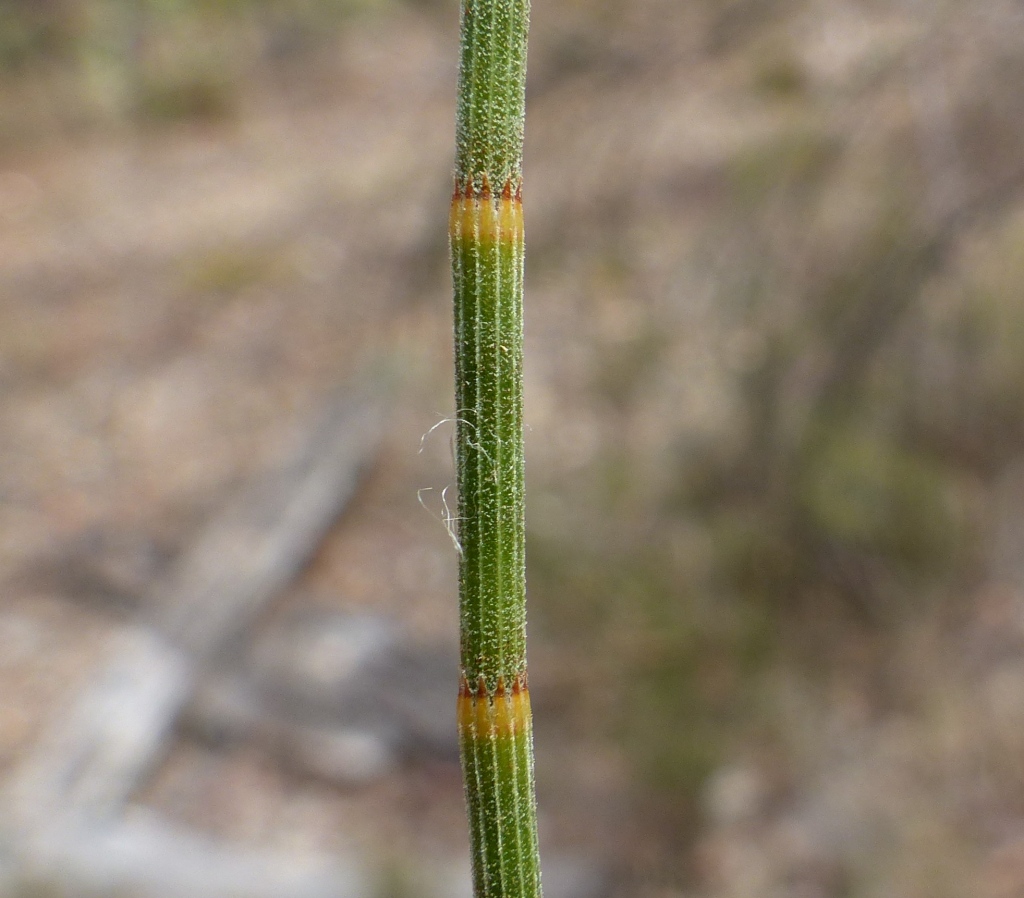Allocasuarina luehmannii
(R.T.Baker) L.A.S.Johnson BulokeDioecious tree, 5–15 m tall; penultimate branchlets woody. Bark furrowed. Branchlets ascending, to 40 cm long; internodes 8–22 mm long, 1–2 mm diam., often waxy, finely pubescent especially in furrows when immature; ribs flat to slightly rounded, minutely roughened. Teeth 10–14, erect, tightly appressed, 0.5–1 mm long, slightly overlapping, usually withered. Male spikes 1–5 cm long, 5–8 whorls per cm; anther c. 1 mm long; bracteoles deciduous individually. Cones very shortly cylindric, broader than long, pubescent at least when young, sessile or on peduncle to 5 mm long; cone body 5–12 mm long, 8–14 mm diam.; bracts inconspicuous; valves in 2 or 3 wheel-like rows, extending well beyond cone body, acute to obtuse, protuberance pyramidal or flattened, obtuse, entire, much shorter than bracteole body and diverging from it near base. Winged seeds 4–5 mm long, red-brown. Flowers Sep.–Nov.
LoM, MuM, Wim, GleP, VVP, VRiv, MSB, RobP, MuF, Gold, CVU, GGr, DunT, NIS. Also SA, Qld, NSW, ACT. Usually growing in woodland with Eucalyptus microcarpa, on non-calcareous soils.
Characterized by its short flattened cones with only 2 or 3 rows of valves.
Entwisle, T.J. (1996). Casuarinaceae. In: Walsh, N.G.; Entwisle, T.J., Flora of Victoria Vol. 3, Dicotyledons Winteraceae to Myrtaceae, pp. 90–101. Inkata Press, Melbourne.
 Spinning
Spinning


